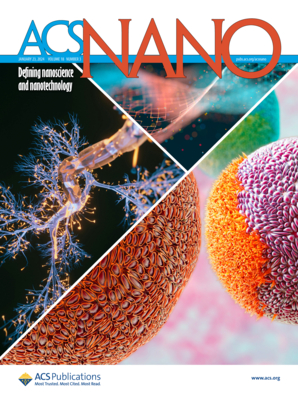Synthetically Engineered Bacterial Extracellular Vesicles and IL-4-Encapsulated Hydrogels Sequentially Promote Osteoporotic Fracture Repair
IF 15.8
1区 材料科学
Q1 CHEMISTRY, MULTIDISCIPLINARY
引用次数: 0
Abstract
Osteoporosis (OP) is a systemic disease characterized by decreased bone density and quality, leading to fragile bones and osteoporotic fractures (OPF). Conventional treatments for OPF often exhibit limited therapeutic efficacy and significant side effects. Synthetic biology-based bacterial extracellular vesicles (BEVs) offer a safe and effective alternative for OPF treatment. Here, we constructed bioengineered BEVs loaded with pBMP-2-VEGF (BEVs-BP) and encapsulated them together with IL-4 in GelMA hydrogels to form IL-4/BEVs-BP@GelMA. Initially, IL-4 alleviated chronic inflammation by modulating immune cells, while BEVs-BP subsequently enhanced osteogenesis and vascularization by upregulating BMP-2 and VEGF expression. In vitro, IL-4/BEVs-BP@GelMA polarized M1 macrophages toward the M2 phenotype, enhanced osteogenesis, and increased angiogenesis. Moreover, BEVs-BP effectively promoted the maturation and mineralization of bone organoids in vivo. Finally, IL-4/BEVs-BP@GelMA successfully accelerated osteoporotic fracture repair in mice. In summary, we developed an easy-to-build and powerful bone repair biomaterial, IL-4/BEVs-BP@GelMA, which offers a therapeutic strategy for osteoporotic fracture management.

求助全文
约1分钟内获得全文
求助全文
来源期刊

ACS Nano
工程技术-材料科学:综合
CiteScore
26.00
自引率
4.10%
发文量
1627
审稿时长
1.7 months
期刊介绍:
ACS Nano, published monthly, serves as an international forum for comprehensive articles on nanoscience and nanotechnology research at the intersections of chemistry, biology, materials science, physics, and engineering. The journal fosters communication among scientists in these communities, facilitating collaboration, new research opportunities, and advancements through discoveries. ACS Nano covers synthesis, assembly, characterization, theory, and simulation of nanostructures, nanobiotechnology, nanofabrication, methods and tools for nanoscience and nanotechnology, and self- and directed-assembly. Alongside original research articles, it offers thorough reviews, perspectives on cutting-edge research, and discussions envisioning the future of nanoscience and nanotechnology.
 求助内容:
求助内容: 应助结果提醒方式:
应助结果提醒方式:


